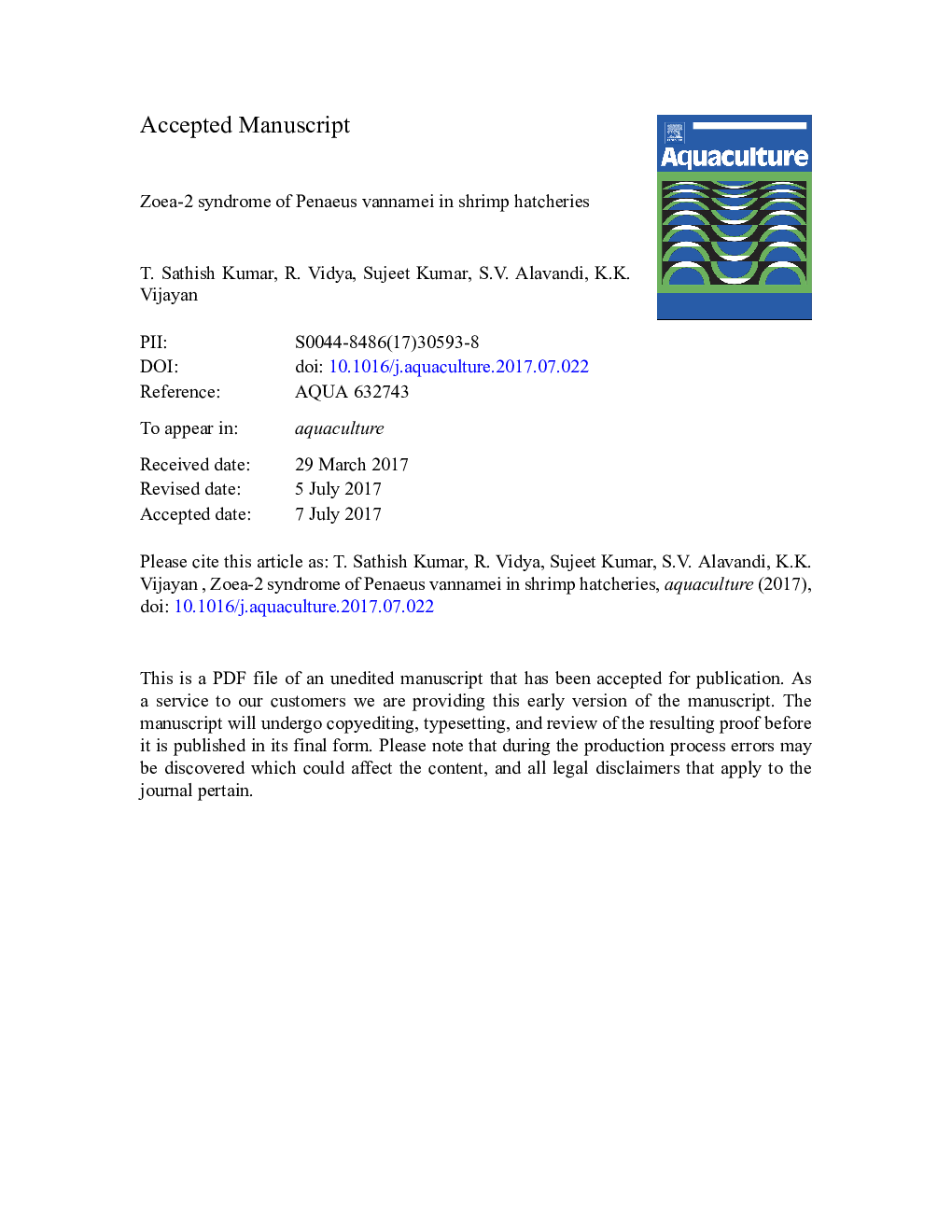| Article ID | Journal | Published Year | Pages | File Type |
|---|---|---|---|---|
| 5539208 | Aquaculture | 2017 | 24 Pages |
Abstract
Mortalities of Pacific white shrimp, Penaeus vannamei during zoea stages were investigated in fifteen Indian shrimp hatcheries located on the east coast of India. Popularly known as zoea-2 syndrome, is characterized by reduction in feeding rate of late zoea 1 and early zoea 2 stage larvae, impairment in metamorphosis followed by high mortalities. Microscopic studies revealed systemic abnormalities in affected larvae and pathological manifestation in hepatopancreas and intestine. Microbiological screening revealed the predominance of Vibrio alginolyticus in majority of the hatcheries (nine) affected by zoea-2 syndrome. Histological examination on the hepatopancreas and intestine revealed vacuolization, sloughing of epithelial cells and disintegration of peritrophic membrane of intestinal epithelium. OIE listed viral pathogens of shrimp were absent in affected larvae as confirmed by OIE polymerase chain reaction (PCR) protocols. Ultrastructural observation of the pathological manifestation in hepatopancreas and intestine could not reveal presence of any pathogens. Data on the water quality parameters were in the normal ranges and did not seem to have any bearing on the outbreak of zoea-2 syndrome in the hatcheries. Feeding schedules (Skeletonema, Chaetoceros, Thalassia) were uniform throughout the larval cycles and found to be not associated with the zoea-2 syndrome. Pathological manifestations of hepatopancreas and intestine indicated impairment of capacity of digestion and absorption resulting in delayed moulting and subsequent death of larvae in a gradual, progressive manner with cumulative mortality reaching of 30-100% at zoea II stage. Continuous stocking of nauplii over three to four days within the same hatchery larval rearing unit was found to exacerbate the incidence in the nine affected hatcheries (OR-48, CI 2.5-932.9). It could be construed from our studies that aetiology of zoea syndrome may not be due to known infectious agents.
Keywords
Related Topics
Life Sciences
Agricultural and Biological Sciences
Aquatic Science
Authors
T. Sathish Kumar, R. Vidya, Sujeet Kumar, S.V. Alavandi, K.K. Vijayan,
